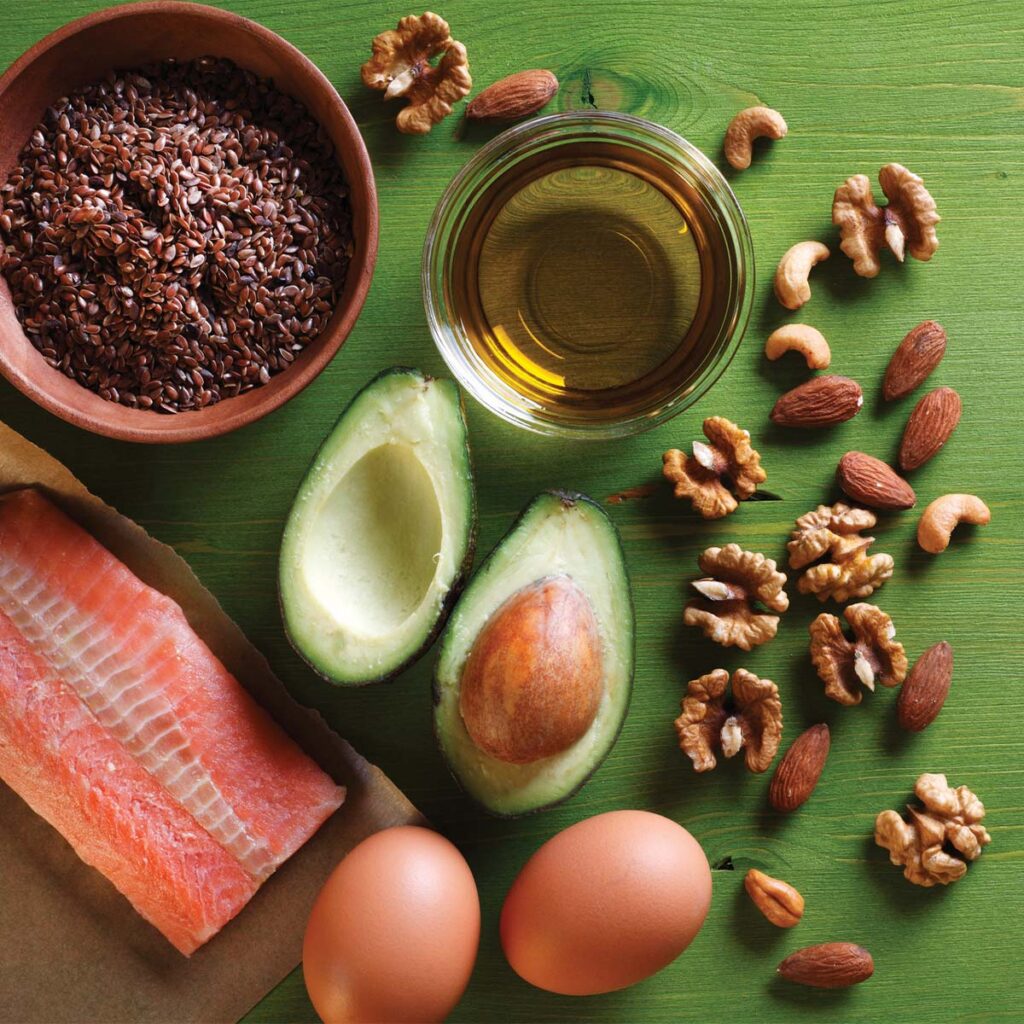Outsmarting the Trends
The New Year is typically met with resolutions for profound changes to diet and exercise. But while focusing on your health is a positive way to start off the year, it can also be a time when trendy diets and unsustainable changes leave people feeling confused and frustrated. Before planning New Year’s resolutions, read through some of the trickier diet buzzwords. The healthiest choices may surprise you!
Low Carb vs. Low Fat
This hot debate is still going strong leaving many with more questions than answers. While it’s true that a low-carbohydrate diet will lead to weight-loss in the short-term, it’s not the kind of weight you’re expecting to lose. Simply put, carbohydrates are stored in the body as glycogen which is paired with water. When you lose glycogen, you lose water, leading to a rapid decrease in weight. Add carbohydrates back to the diet and the weight of stored glycogen plus water returns.
Low fat diets decrease calories, but could tempt you to replace fats with refined carbs (highly processed carbs like enriched white flours, white rice, and added sugars) which have negative health effects. However, certain types of fats, are beneficial. So what’s the deal?
Limit refined carbohydrates and saturated fats! A diet consisting of moderate amounts of carbs and healthy fats is best for sustained weight maintenance and health. Stick to whole food sources of carbohydrates such as fruits, vegetables, whole grains, beans, and legumes.


Add fat with nuts and seeds, fish, and other unsaturated sources like olive oil and avocado. Is it a quick fix? No. Does it support your longevity and total health? Yes.
Organic vs. Natural
“Natural” and “organic” are often seen on food packaging. They’re tricky because they are typically thought of as the same thing, but in fact, they are very different. “Organic” is defined by the United States Department of Agriculture (USDA) and is strictly regulated in labeling. However, there are varying percentages of ingredients that qualify as “organic.”
A product that states “100% organic” must consist of 100% organic ingredients. One that states simply, “organic” must consist of at least 95% organic ingredients. A label that lists “made with organic ____” must consist of at least 70% organic ingredients. Organic foods are defined by the practices used in growing and processing the food, not by the food’s nutrient value.
“Natural” is another term frequenting food labels. But unlike “organic,” the term “natural” isn’t regulated. According to the Food and Drug Administration, “natural” can be used on a food label if it, “[D]oes not contain added color, artificial flavors, or synthetic substances.” Until “natural” is clearly defined by the FDA, take it with a grain of salt.
Dairy Milk vs. Non-Dairy
Once only found in specialty stores, non-dairy milks like hemp, soy, rice, and coconut milk are now readily available in most stores nationwide. With so many choices comes the question of whether to switch from dairy milk to non-dairy alternatives.
Dairy milk is a source of calcium, vitamin D, phosphorus, and protein. If you’re eliminating dairy from your diet due to lactose intolerance, a dairy allergy, or other dietary restrictions (such as following a vegan diet) it’s important to consider how you’ll replace those key nutrients. Of course, they can be found in other food sources such as beans, leafy greens, whole grains, and nuts and seeds.
Many non-dairy milks, like almond and soy, are fortified with calcium and vitamin D. However, between the two, soy milk contains closer to the amount of protein found in cow’s milk coming in at 8g per 8 fl. oz., whereas almond milk has only 1g protein per 8 fl. oz. Other options like coconut, and hemp milk are lower in protein and higher in fat than other non-dairy milks. But the type of fat they contain differs. Coconut milk contains mostly saturated fat while hemp milk has omega-3 and omega-6 fats.
Lastly, rice milk is increasingly popular as it is safe for people with nut allergies. It’s also lower in protein than cow’s milk, but it’s typically fortified with calcium and vitamin D.



Allison Knott, MS, RD, LDN
Registered Dietitian, Nutrition Communication and Wellness Consultant

